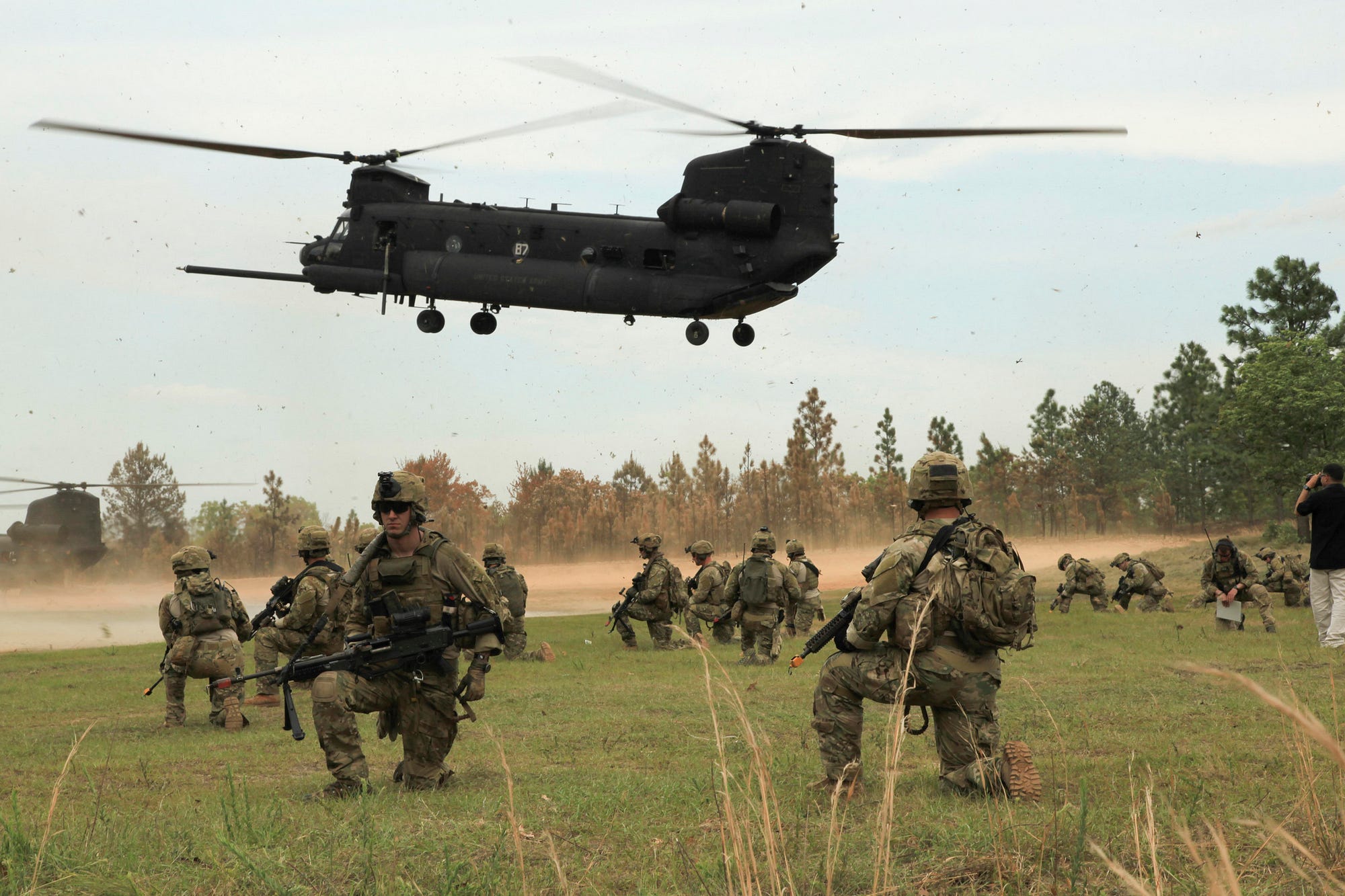On Sept. 30, the U.S. Army unceremoniously stood up a new headquarters—the 1st Special Forces Command—at Fort Bragg, North Carolina. The division-level unit brings together more than 15,000 Green Berets and other special troops in a single new organization.
Previously, the Army’s Special Operations Command had directly controlled all of these troops plus others on a wide range of missions. The idea behind the new HQ is to assemble a force specifically tailored for dealing with what the Pentagon calls “hybrid warfare.”
Simply put, hybrid warfare is a blend of straight-up traditional combat—with infantry, tanks and artillery—and secretive insurgency. Probably the biggest practitioner of hybrid warfare is Russia.
Just look at what’s going on in Ukraine, where Russian-supplied separatist insurgents are fighting alongside disguised Russian troops in an attempt to seize territory from the government in Kiev and bring it under Moscow’s sway.
Among other tasks, the U.S. Army’s new 1st Special Forces Command could help the ground combat branch counter hybrid warfare—by sending Green Beret advisers to train, advise and lead native troops in embattled countries.
“This is … a real requirement based on Russia’s hybrid warfare approach, as well as the need for partners in places like Libya, Syria and Iraq, where we want to help stabilize the chaos,” Navy captain Robert Newson, a fellow at the Council on Foreign Relations, said of the new Army HQ.
“This reorganization has been in the planning roughly a year,” the Army’s main Special Forces headquarters explained. “[The Command] will not be fully capable until July 2015.”
To be fair, training foreign fighters—“unconventional warfare,” the military calls it—has long been a main mission for Army Special Forces, albeit one that had fallen out of favor recently.
After 9/11, the Pentagon deployed Special Forces and Army Rangers, Navy SEALs and other Special Operations Forces all over the world to fight insurgents and hunt terrorists. They largely took “direct action”—hitting the bad guys on their own—rather than working through local forces.
But from the 1940s into the 1990s, the Special Forces mostly practiced unconventional warfare—indirect action, if you will, and the focus of the new 1st Special Forces Command. In that way, the new HQ brings Special Forces “back to its roots,” said Newson, a SEAL officer who served in Afghanistan, Iraq and Yemen.
This indirect method of warfare is ideal in situations where an American presence could be “too costly or be counter-productive,” Newson explained.
 Above—American commandos during an exercise in 2012. At top—a Special Forces soldier in Afghanistan. Army photos
Above—American commandos during an exercise in 2012. At top—a Special Forces soldier in Afghanistan. Army photos
The 1st Special Operations Command will bring together all the units that are best at unconventional missions, including Green Berets, psychological warfare experts, civil affairs specialists and special logistics personnel.
The division-level headquarters will not include the unique planes and helicopters of the 160th Special Operation Aviation Regiment or the 75th Ranger Regiment’s elite infantry. These units will stick to direct action.
The Army wants the new HQ to be able to quickly assemble Green Beret task forces to handle specific crises. These temporary task forces would draw on the personnel from within 1st Special Forces Command—and potentially pair them up with commandos from the Navy, Marines and Air Force.
And under the same plan that creates 1st Special Forces Command, the fourth battalion in each of the Army’s seven Special Forces Groups will reorganize specifically for working with allied troops, with new detachments of Green Berets that 1st Special Forces Command will be able to peel off and send overseas.
These elements will be reminiscent of the “Jedburghs” from World War II, according to an official briefing.
Jedburghs were the paramilitary arm of Allied intelligence organizations like the Office of Strategic Services—the predecessor of the Central Intelligence Agency. The Jedburgh commandos sneaked into Axis-occupied Europe and Asia to work with resistance groups and harass occupying forces.
Now, the Army’s new Special Forces structure doesn’t actually add manpower. In fact, the Green Berets will actually cut 1,000 people in order to stay within shrinking budgets, an official told War Is Boring.
https://medium.com/war-is-boring/the-u-s-army-has-quietly-created-a-new-commando-division-2b90961b4821
No comments:
Post a Comment